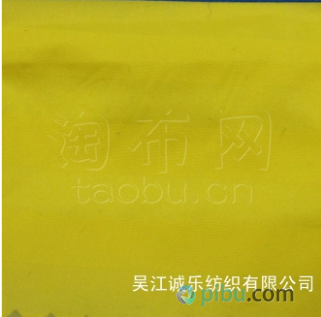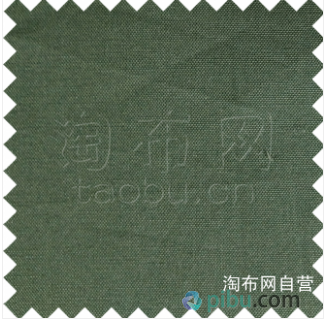Whether it is clothing or fabrics used in everyday life, tearing will always occur. It's always awkward and annoying. Is fabric tearing because of bad fabrics? What fabric is more resistant to tearing?
Â
The main factors affecting the tensile strength and tear strength of fabrics are:
Â
1 , related to warp and weft yarn breaking strength, strength
This is related to the material and blend ratio of the raw material of the yarn, the fineness (count or number) of the fiber itself, and the fineness (count or number) of the yarn, the evenness of the yarn, the moisture regain or the moisture content, Yarn or strand, single yarn and strand twist (twist coefficient), fiber or yarn storage life and other factors are related. Elastic fibers, including their elongation, can make a big difference.
Â
2. The factors affecting fabric strength are also related to the weaving methods and weaving conditions of fabrics (such as: knitted fabrics and woven fabrics), organizational structures (such as plain weave, twill weave, satin weave, jacquard weaving, etc.), and warp and weft yarn densities.
The strength of the warp and weft are different, and the strength of the top is different. Whether it contains cloth edges, whether it is solid edges or burrs, whether it avoids defects and folds, the distance from the original fabric edge may be different (so the sampling must be At least 150 mm away from the cloth edge ).
In addition, the sizing grey cloth and the desizing cloth, the dyed and finished cloth, especially the impregnated cloth and special finishing cloth, will have a big difference in strength. Weaving processes, dyeing, sanding, etc. all have an impact. The thicker yarns show better strength than the finer yarns. The diagonal weave is better than the plain weave. The non-grinding is better than the rubbing, and the less corrosive the dyeing, the better.
Â
3 , the strength of yarn-dyed fabrics is different from the original yarn strength, warp and weft density, yarn fineness, finishing process these several related, to improve the strength of yarn-dyed fabrics must be improved from these few .
The ironing-free fabric will be stretched and tear strength will be reduced after being free of ironing, which directly affects the durability of the fabric. The tensile and tear strength of the fabric before and after the non-heat finishing, the strength and elongation of the yarn, the interweaving resistance, and the morphological structure have a significant influence on the strength.
When the fabrics made of strong and high elongation yarns are torn, the force triangle area is large, and the number of yarns under common forces is large, and the tear strength is high. The organizational structure and the density of warp and weft yarns affect the interweaving point and slippage between yarns. There are few interlacing points, and the yarn slips easily, and the tear strength of the fabric is high.
Â
4. After the garment is worn for a period of time during the actual wearing process, the yarn in the fabric becomes fine due to the friction, and some parts often undergo sudden tearing.
As follows, some parts of the hips of the pants and parts where the clothes are caught by the objects are subjected to external forces and the internal yarns of the fabric are broken by the limit load. During the use of textiles, if it is subjected to local concentrated loads for a long period of time, it may cause the strength to reach the limit and decrease, thereby affecting the stretching and tear strength of the fabric.
Â
So what kind of fabrics have better tensile strength and friction resistance?
Â
nylon cloth
Â
Nylon was developed by Carothers, a prominent American scientist , and a team of scientists under his leadership. It is the world's first synthetic fiber. The abrasion resistance of nylon fabric ranks first in all kinds of fabrics, 10 times higher than that of cotton , 20 times higher than wool , and slightly adding some polyamide fibers in the blended fabric, which can greatly improve its abrasion resistance; when stretched At 3-6% , the elastic recovery rate can reach 100% ; it can withstand tens of thousands of times without breaking. , It is many times higher than other fiber fabrics of the same type, so its durability is excellent. Clothing made of nylon is more comfortable to wear than polyester clothing. Suitable for making mountaineering clothing, winter clothing, etc.
Â

Click here for more nylon cloth
Â
Oxford cloth
Â
Oxford cloth ( oxford ), also known as Oxford spinning. Originated in the United Kingdom, the traditional combed cotton fabric named after the University of Oxford, Oxford cloth began around 1900 . The finer combed high-count yarns are used as double warp, and the thicker weft yarns are interwoven with weft-heavy flat tissues.
Soft color, soft cloth body, good breathability, comfortable to wear, easy to wash and dry, used as shirts, sportswear and pajamas. Waterproof, good durability and other advantages, also used to make bags. There are many fancy products, including plain color, bleaching, white color weft, color weft, medium and light color bar patterns, etc. We also use polyester/ cotton yarns to weave.
Â

Click here to learn more about Oxford cloth
Â
For more content, please follow this site
Men Sunglasses,Best Stylish Sunglasses,Mens Fashion Sunglasses,Stylish Sunglasses For Men
WENZHOU BOCHENG EYEWEAR CO.,LTD , https://www.bocheyewear.com
